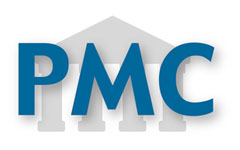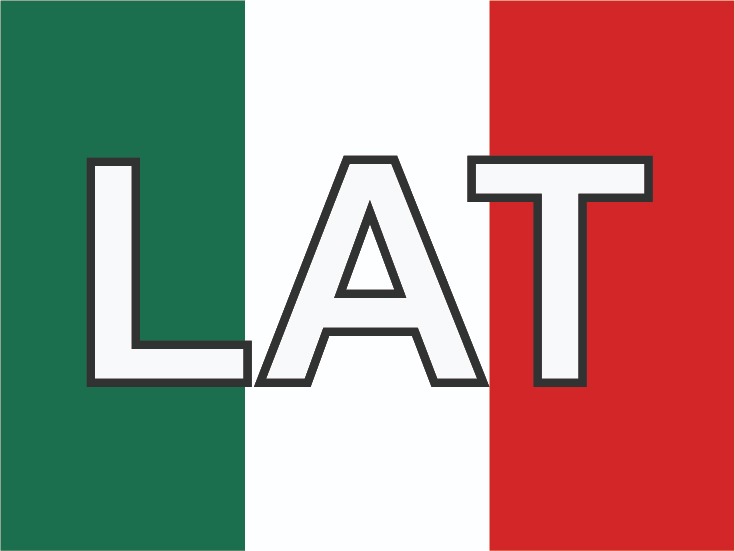Expression and activation of intracellular receptors TLR7, TLR8 and TLR9 in peripheral blood monocytes from HIV-infected patients.
Abstract
Introduction. TLR´s play a role in host defense in HIV infection recognizing the viral DNA or RNA. Their activation induces a signaling pathway that includes the proteins MyD88, IRAK4, TRAF6 and the transcription factor NF-kBp65.
Objective. To determine the expression of TLR7, TLR8 and TLR9, and activation of its signaling pathway in monocytes from patients infected with HIV. Methods. Expression of TLR7, TLR8 and TLR9 was determined in monocytes from HIV-infected patients (n = 13) and control subjects (n = 13), which were activated with specific ligands. The expression of MyD88 and NF-kBp65 were determined by flow cytometry; IRAK4 and TRAF6 were studied by immunoblotting.
Results. No statistical difference was found in the expression of TLR7, 8 and 9 in monocytes from patients compared to controls, but we observed the non-significant increased expression of TLR9 in patients. The activation showed no significant difference in the expression of MyD88 and NF-kBp65 in patients when compared to controls, but were decreased in stimulated cells over non-stimulated cells. IRAK4 and TRAF6 were not detected.
Conclusions. No statistical difference was observed in the expression of intracellular TLRs, MyD88 and NFkBp65 in monocytes from patients compared to controls. This was probably due to effective antiretroviral therapy being received at the time of study entry. Additional studies are needed (ARTV) under controlled conditions that include infected patients with and without ARVT, responders and non- responders, and work with different cell populations
Authors
Downloads
Keywords
- Innate immunity
- monocytes
- toll-like receptors
- HIV.
References
Fauci AS, Lane HC. Human immunodeficiency virus (HIV) disease: AIDS and related disorders. In: Fauci AS, Braunwald BE, Isselbacher KJ, eds. Harrison’s principles of internal medicine. 14th Ed. New York: McGraw-Hill 1998; Pags 1791-856.
Weiss RA. Special anniversary review: twenty-five years of human immunodeficiency virus research: successes and challenges. Clin Exp Immunol. 2008; 152(2): 201-10.
Janeway C.A, Medzhitov R. Innate immune recognition. Annu Rev Immunol. 2002; 20:197- 216.
Akira S, Uematsu S, Takeuchi O. Pathogen recognition and innate immunity. Cell. 2006; 124(4): 783-801.
Janssens S., Beyaert R. Role of Toll-Like receptors in pathogen recognition. Clinical Microbiol. 2003; 16(4): 637-46.
Akira S., Takeda K. Toll-like receptor signalling. Nat Rev Immunol. 2004; 4(7): 499-511.
West A. P., Koblansky A. A., Ghosh S. Recognition and signaling by Toll-like receptors. Annu Rev Cell Dev Biol. 2006; 22: 409-37.
Schlaepfer E, Audige´A, Joller H, Speck R. TLR7/8 triggering exerts opposing effects in acute versus latent HIV infection. J Immunol. 2006; 176(5): 2888–95.
Schlaepfer E, Speck R. Anti-HIV activity mediated by natural killer and CD8+ cells after Toll-Like receptor 7/8 triggering. Plos One. 2008; 3(4): e1999.
Ayash-Rashkovsky M, Borkow G, Davis HL, Moss RB, Moss RB, Bartholomew R, et al. Enhanced HIV-1 specific immune response by CpG ODN and HIV-1 immunogen-pulsed dendritic cells confers protection in the Trimera murine model of HIV-1 infection. FASEB J. 2005; 19(9): 1152-4.
Bonizzi G, Karin M. The two NF-kB activation pathways and their role in innate and adaptive immunity. Trends Immunol. 2004; 25(6): 280-8.
Equils O, Schito ML, Karahashi H, Madak Z, Yarali A, Michelsen KS, et al. Toll-like receptor 2 (TLR2) and TLR9 signaling results in HIV-long terminal repeat trans-activation and HIV replication in HIV-1 transgenic mouse spleen cells: implications of simultaneous activation of TLRs on HIV replication. J Immunol. 2003; 170(10): 5159-64.
Hornung V, Rothenfusser S, Britsch S, Krug A, ahrsdörfer B, Giese T, et al. Quantitative expression of toll-like receptor 1-10 mRNA in cellular subsets of human peripheral blood mononuclear cells and sensitivity to CpG oligodeoxynucleotides. J Immunol. 2002; 168(9): 4531-7.
Eaton-Bassiri A, Dillon SB, Cunningham M, Rycyzyn MA, Mills J, Sarisky RT, et al. Toll-Like receptor 9 can be expressed at the cell surface of distinct populations of tonsils and human peripheral blood mononuclear cells. Infect Immun. 2004; 72(12): 7202-11.
Huang Y, Walstrom A, Zhang L, Zhao Y, Cui M, Ye L, et al.Type I interferons and interferon regulatory factors regulate TNFrelated apoptosis-inducing ligand (TRAIL) in HIV-1-infected macrophages. Plos One. 2009; 4 (4): 5397.
Thieblemont N, Weiss L, Sadeghi HM, Estcourt C, HaeffnerCavaillon N. CD14lowCD16high: A cytokine-producing monocyte subset which expands during human immunodeficiency virus infection. Eur J Immunol. 1995; 25 (12): 3418-24.
Nielsen SD, Ersboll AK, Mathiesen L, Nielsen JO, Hansen JES. Highly active antiretroviral therapy normalizes the function of progenitor cells in human immunodeficiency virus-infected patients. J Infect Dis. 1998; 178(5): 1299-305.
Afani A, Jiusán L, Raby P, Sitia G, Puente J, Sepúlveda C, et al. Restauración de la inmunidad innata en pacientes con infección por VIH/SIDA después de inicio de terapia antirretroviral. Rev Méd Chilena. 2006; 134(6): 689-96.
Amirayan-Chevillard N, Tissot-dupont H, Capo C, Brunet C, Dignat-George F, Obadia Y, et al. Impact of highly active anti-retroviral therapy (HAART) on cytokine production and monocyte subsets in HIV-infected patients. Clin Exp Immunol 2000; 120(1): 107-12.
Lester RT, Yao XD, Ball TB, McKinnon LR, Kaul R, Wachihi C, et al. Toll-like receptor expression and responsiveness are increased in viraemic HIV-1 infection. AIDS. 2008; 22(6): 685-94.
Scagnolari C, Selvaggi C, Chiavuzzo L, Carbone T, Zaffiri L, d’Ettorre G, et al. Expression levels of TLRs involved in viral recognition in PBMCs from HIV-1-infected patients failing antiretroviral therapy. Intervirology. 2009; 52(2): 107-14.
Bochud PY, Hersberger M, Taffé P, Bochud M, Stein CM, Rodrigues SD, et al. Swiss HIV cohort study. Polymorphisms in Tolllike receptor 9 influence the clinical course of HIV-1 infection. AIDS. 2007; 21(4): 441-6.
Pine SO, McElrath, M, Bochud P. Polymorphisms in toll-like receptor 4 and toll-like receptor 9 influence viral load in a seroincident cohort of HIV-1-infected individuals. AIDS. 2009; 23(18): 2387-95.
Oh D, Baumann K, Hamouda O, Eckert JK, Neumann K, Kücherer C, et al. A frequent functional toll-like receptor 7 polymorphism is associated with accelerated HIV-1 disease progression. AIDS. 2009; 23(3): 297-307.
Muzio M, Bosisio D, Polentarutti N, D’amico G, Stoppacciaro A, Mancinelli R. et al. Differential expression and regulation of Toll-Like Receptors (TLR) in human leukocytes: selective expression of TLR3 in dendritic cells. J Immunol. 2000; 164: 5998–6004.
Kadowaki, N, Ho S, Antonenko S, R.W. Malefyt, R.A. Kastelein, F. Bazan., et al. Subsets of human dendritic cell precursors express different Toll-like Receptors and respond to different. J Exp Med. 2001; 194(6): 863–69.
Gorden KB, Gorski KS, Gibson SJ, Kedl RM, Kieper WC, Qiu X, et al. Synthetic TLR agonists reveal functional differences between human TLR7 and TLR8. J Immunol. 2005; 174(3): 1259-68.
The copy rights of the articles published in Colombia Médica belong to the Universidad del Valle. The contents of the articles that appear in the Journal are exclusively the responsibility of the authors and do not necessarily reflect the opinions of the Editorial Committee of the Journal. It is allowed to reproduce the material published in Colombia Médica without prior authorization for non-commercial use




















